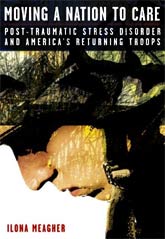LinkBlog
Crying Shame - a Priory Group survey about stigma and mental illness in Britain (pdf)
6 Golden Rules for Conquering Performance Anxiety by David Leisner
Freedom from Fear's On Target Summer/Fall 2007 newsletter - an anxiety & depression resource (PDF)
Switching between monoamine oxidase inhibitors (MAOIs) and SSRI or tricyclic antidepressants (.doc format)
When fear is near: How our brains respond to approaching danger

Scientists have identified for the first time how our brain's response changes the closer a threat gets. Using a "Pac Man"-like computer game where a volunteer is pursued by an artificial predator, the researchers showed that the fear response moves from the strategic areas of the brain towards more reactive responses as the artificial predator approaches.
When faced with a threat, such as a large bear, humans, like other animals, alter their behavior depending on whether the threat is close or distant. This is because different defence mechanisms are needed depending on whether, for example, the bear is fifty feet away, when being aware of its presence may be enough, or five feet away, when we might need to fight or run away.
To investigate what happens in the brain in such a situation, researchers at the Wellcome Trust Centre for Neuroimaging at University College London (UCL), created a game where subjects were chased through a maze by an artificial predator - if caught, they would receive a mild electric shock. The researchers then measured their brain activity using functional magnetic resonance imaging (fMRI).
When the artificial predator was in the distance, the researchers observed activity in lower parts of the prefrontal cortex just behind the eyebrows. Activity in this area - known as the ventromedial prefrontal cortex - increases during anxiety and helps control strategies on how to respond to the threat.
However, as the predator moved closer, the brain activity shifted to a region of the brain responsible for more primitive behavior, the periaqueductal gray. This is associated with quick-response survival mechanisms, which include fight, flight and freezing. This region is also associated with the body's natural pain killer, opioid analgesia, preparing the body to react to pain.
Dr Dean Mobbs from UCL, lead author on the study, says: "Without fear, animals would not react to threats. This is a poor survival strategy and makes it more likely that the animal will be eaten and not pass on its genes.
"The most efficient survival strategy will depend on the level of threat we perceive. This makes sense as sometimes being merely wary of a threat is enough, but at other times we need to react quickly. The closer a threat gets, the more impulsive your response will be - in effect, the less free will you will have."
Although this natural defence mechanism is beneficial in evolutionary terms, Dr Mobbs believes that malfunctions in the system might help explain why some people suffer from anxiety disorders and panic attacks.
"When our defence mechanisms malfunction, this may result in an over-exaggeration of the threat, leading to increased anxiety and, in extreme cases, panic," says Dr Mobbs. "Although brain-imaging studies like ours cannot directly help to cure such disorders, they do improve our understanding of how the emotional system operates. This is the first step to helping people with anxiety-related disorders."
Mobbs D, Petrovic P, Marchant JL, et al. When Fear Is Near: Threat Imminence Elicits Prefrontal-Periaqueductal Gray Shifts in Humans Science 2007 Aug 24:317(5841):1079-83 [Abstract]















